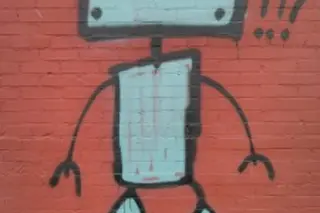Photo: flickr/steevithakEver wonder whether a Twitter account is run by a real person or a bot? So did these British scientists, who have developed a way to tell the two apart. In this study, the authors use Bayesian statistics to distinguish between human, corporate, and robot Twitter accounts, primarily using the tweet timing. They found that robot accounts post more consistently throughout the day, while human accounts exhibit more highs and lows corresponding to daily routines. In particular, humans take a break from tweeting around noon, and reach peak Twitter frenzy around 9pm. So, if you want your Twitter robot to appear more human, give it a lunch break. Scaling-Laws of Human Broadcast Communication Enable Distinction between Human, Corporate and Robot Twitter Users "Human behaviour is highly individual by nature, yet statistical structures are emerging which seem to govern the actions of human beings collectively. Here we search for universal ...
Statistics catch Twitter bots in the act.
Discover how to distinguish between human and robot Twitter accounts using tweet timing behavior analysis and Bayesian statistics.
More on Discover
Stay Curious
SubscribeTo The Magazine
Save up to 40% off the cover price when you subscribe to Discover magazine.
Subscribe













